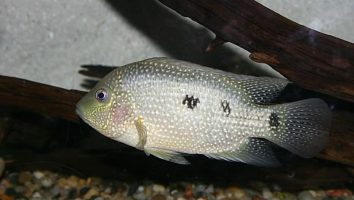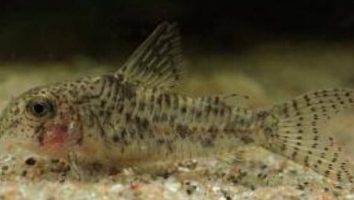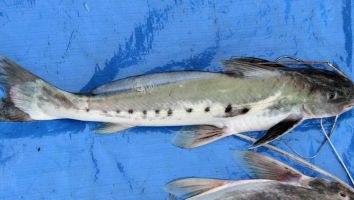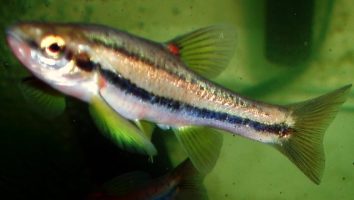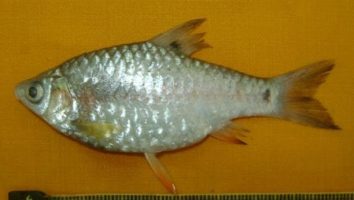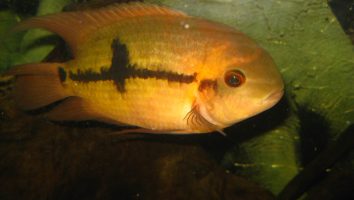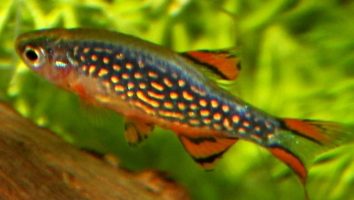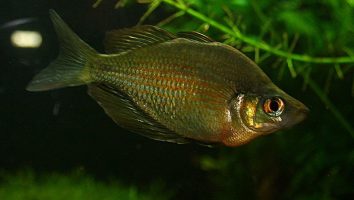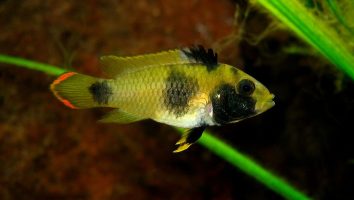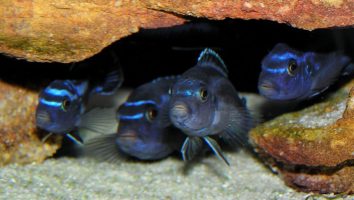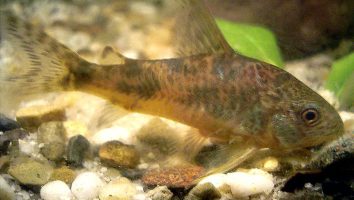Blue corydoras are a beautiful and popular freshwater fish that are easy to care for.
This species is peaceful, hardy, and very active. They’re a great addition to any community tank!
But there’s a lot of conflicting information out there about their care. So we made this guide to set the record straight. In it, you’ll learn everything you need to know about blue corydoras care. Tank size, diet, tank mates, and more.
Table of contents
Species overview
Blue corydoras (Corydoras splendens) are a popular freshwater aquarium fish that is native to Brazil. They are found in the Rio Negro basin, which is a tributary of the Amazon River.
They prefer slow-moving waters with a lot of vegetation. This is something that is common among many species of corydoras, as they are bottom-dwelling fish.
Corydoras are peaceful fish that do well in community tanks. They are often kept with other bottom-dwelling fish, such as loaches and plecos.
The blue corydoras is one of the most popular species of corydoras, due to its bright blue color. This fish is relatively easy to care for, which makes it a good choice for beginner aquarium hobbyists.
Appearance
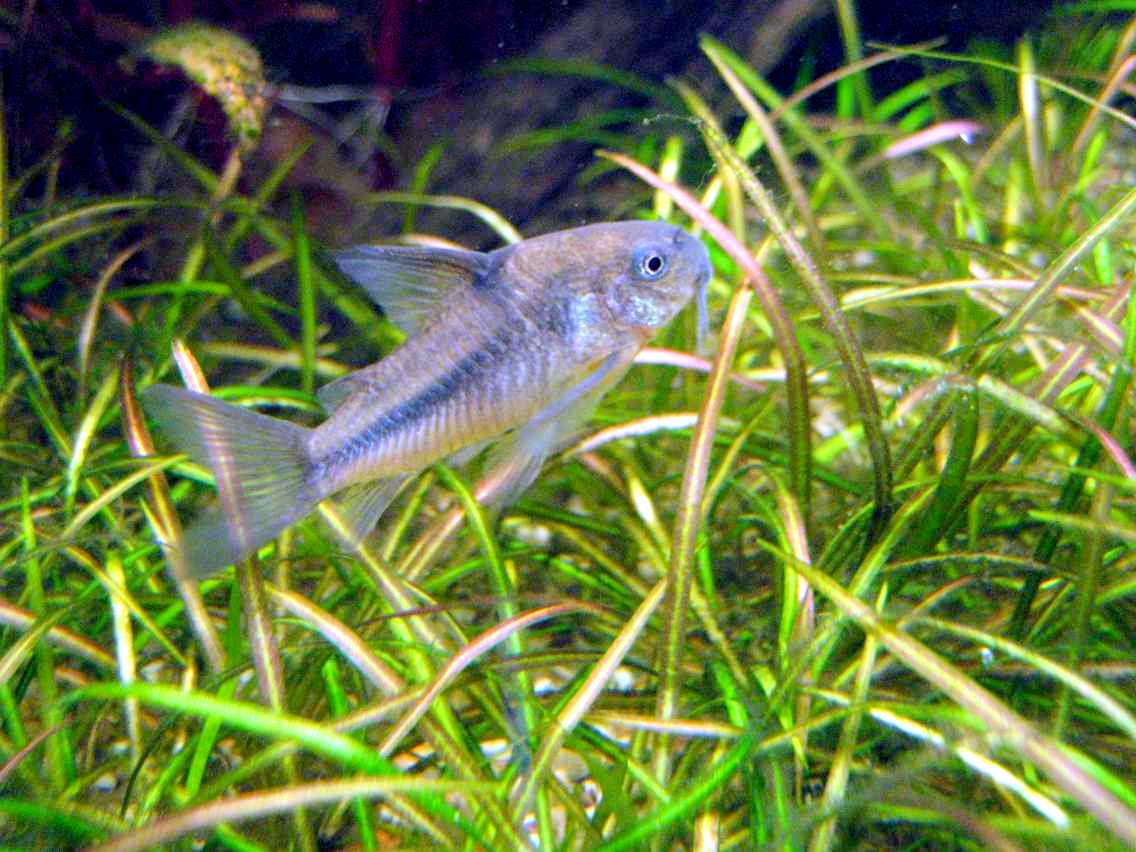
The blue corydoras is one of the more popular corydoras species due to its unique coloration. As you can probably guess from their name, these fish are a beautiful blue color. The blue extends from their head all the way down to their tail fin.
You’ll notice that their fins are all translucent with a bit of an iridescent quality to them. The dorsal fin is short and stubby, while their ventral and pectoral fins are much longer. The anal fin is somewhere in the middle in terms of length.
All corydoras have a “barbels” near their mouths. These are used to help them find food in murky waters. The blue corydoras has 4 barbels in total (2 on each side).
These fish are bottom-dwellers and have a flattened belly which helps them move along the substrate easily. They have a relatively small head and eyes that are set close together.
Lifespan
The typical lifespan for a blue corydoras is 5 to 10 years. There are a number of contributing factors to their longevity.
First, these fish are relatively resistant to disease. This is due to their armored scales and tough skin.
They’re also not particularly susceptible to the stress that can come from poor water quality or tank mates.
Finally, they have a generally slow metabolism. This means they don’t require a lot of food to sustain themselves, which can help them live longer.
Size
Blue corydoras typically grow to be about 2-3 inches long.
Tank
Tank Size
The minimum tank size for blue corydoras is 30 gallons. This is assuming you’re keeping them in a school of at least 5 or 6 fish (which you should). We personally recommend a slightly larger tank if you can accommodate it. Every extra space will make a big difference and allow you to keep a larger school or more tank mates if you’re interested in a community tank.
Water Parameters
Blue corydoras are a freshwater fish that requires specific water parameters to stay healthy. These fish are native to South America and can be found in the wild in Peru, Brazil, and Bolivia.
In the wild, blue corydoras live in slow-moving rivers and streams with a sandy bottom. The water is typically clear with a moderate amount of vegetation.
To replicate this environment in your aquarium, you’ll need to maintain the following water parameters.
- Water temperature: 72 to 79 degrees Fahrenheit
- pH levels: 6.2 to 7.8
- Water hardness: 2 to 12 dGH
- Alkalinity Levels: 4-8 dKH
What To Put In Their Tank
When it comes to Corydoras, we like to keep things on the simpler side.
The reason for this is two-fold. First, Corys are bottom-dwellers so they’re not going to be interested in anything that’s happening near the top of the tank. Second, they’re small fish so anything you put in their habitat is going to look more pronounced.
With that being said, feel free to use whatever substrate you’d like. These fish don’t have any specific needs in this department.
As for decoration, we recommend a few things. First, some driftwood or rocks can provide some much-needed hiding spots for these fish. They’re timid by nature and like to have a place to retreat to when they feel threatened.
Second, some plants can also be a good addition. Corydoras are known to eat plants from time to time, but there are some that are more resilient than others. Hornwort, Java moss, and water wisteria are all good choices.
You don’t need to go overboard with the plants though. A few pieces here and there should be plenty.
Common Diseases
The Blue Corydoras is a freshwater fish that is relatively hardy and resistant to disease. However, like all fish, they can still fall ill if the conditions in their tank are not ideal.
The most common disease that affects this species is ich. This is a parasitic infection that is characterized by the presence of white spots on the body, fins, and gills of the fish.
If left untreated, ich can be fatal. However, it is relatively easy to treat if you catch it early.
Other potential diseases include bacterial infections, fungal infections, and parasites. These are all relatively rare but can still occur if the fish are stressed or the water quality is poor.
As with all fish, the best way to prevent disease is to maintain a clean and stable tank. This will help to keep your fish healthy and reduce the likelihood of them getting sick.
Behavior & Temperament
The blue corydoras is a peaceful fish that is best kept in groups. They are shy fish that will often spend their time hiding, but when they are out and about they are very active. They are bottom-dwellers and will often be seen scavenging for food or swimming around in the substrate.
Corydoras are social creatures and do best when kept in groups. They are also very active fish, so it is important to provide them with plenty of space to swim. They are typically peaceful fish, but they can be territorial if they feel crowded.
Blue corydoras are also known for their “cleaning” habits. They will often pick up bits of food that have fallen to the bottom of the tank and help to keep the tank clean.
Tank Mates
Blue corydoras are a great addition to any community tank. They’re peaceful and get along with most other fish species.
These bottom-dwelling fish are also easy to care for, which makes them a good choice for beginner aquarists.
When choosing blue corydoras tank mates, it’s important to consider the size of your fish. Blue corydoras only grow to be about 2.5 inches (6.4 cm), so they can’t compete with larger fish.
You’ll also want to make sure that your tank mates can tolerate the same water conditions as blue corydoras. These fish come from slow-moving rivers in South America, so they prefer warm water with a neutral pH.
Some good blue corydoras tank mates include:
- Tetras
- Guppies
- Mollies
- Platies
- Swordtails
- Rainbowfish
- Danios
Breeding
Corydoras are one of the easiest species of fish to breed in captivity. If you provide them with the right habitat and food, they will do the rest!
The first step is to identify the males and females. This can be tricky since they look very similar. The best way to tell them apart is by looking at their fins. Males have longer and sharper fins than females.
Once you have your group of fish, you will need to set up a breeding tank. The tank should be at least 20 gallons and should have a lot of hiding places. Corydoras like to feel secure, so the more places they can hide the better.
You will also need to add a layer of peat moss to the bottom of the tank. This will help to recreate their natural habitat and make them feel more at home.
Now it’s time to slowly acclimate your fish to the new tank. Once they are comfortable, the female will lay her eggs on the peat moss. The male will then fertilize them.
After about a week, the eggs will hatch. You can then remove the adults and begin feeding the fry baby brine shrimp.
Conclusion
The Blue Corydoras is a very peaceful and social fish that does well in a community tank. They are easy to care for and make a great addition to any tank.
The only thing to be aware of is that they are a bit more delicate than some of the other Corydoras species. This means that they may not do as well in a tank with very high water flow or with fish that are known to be nippy.
Other than that, they are an easy fish to care for and make a great addition to any community tank.

